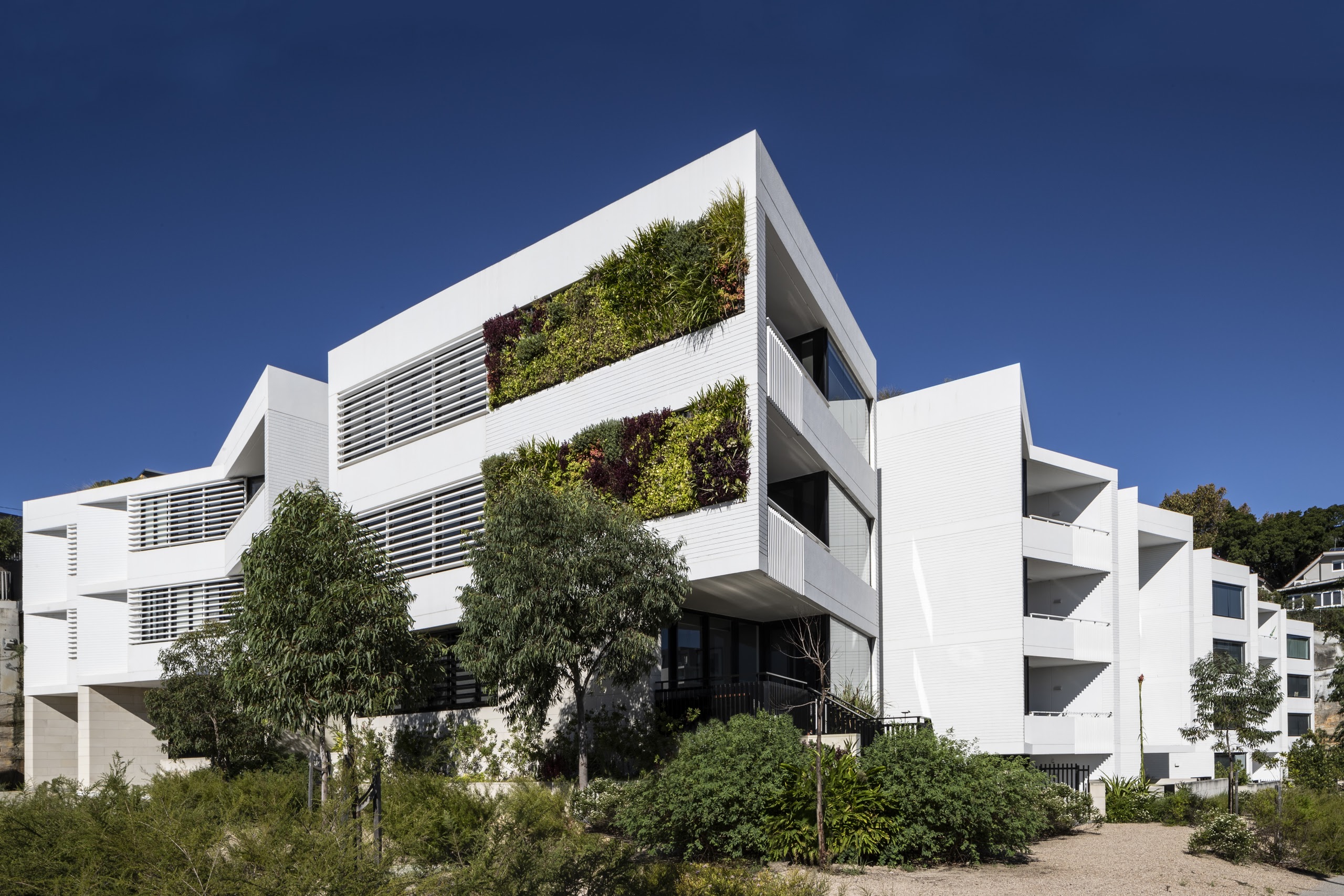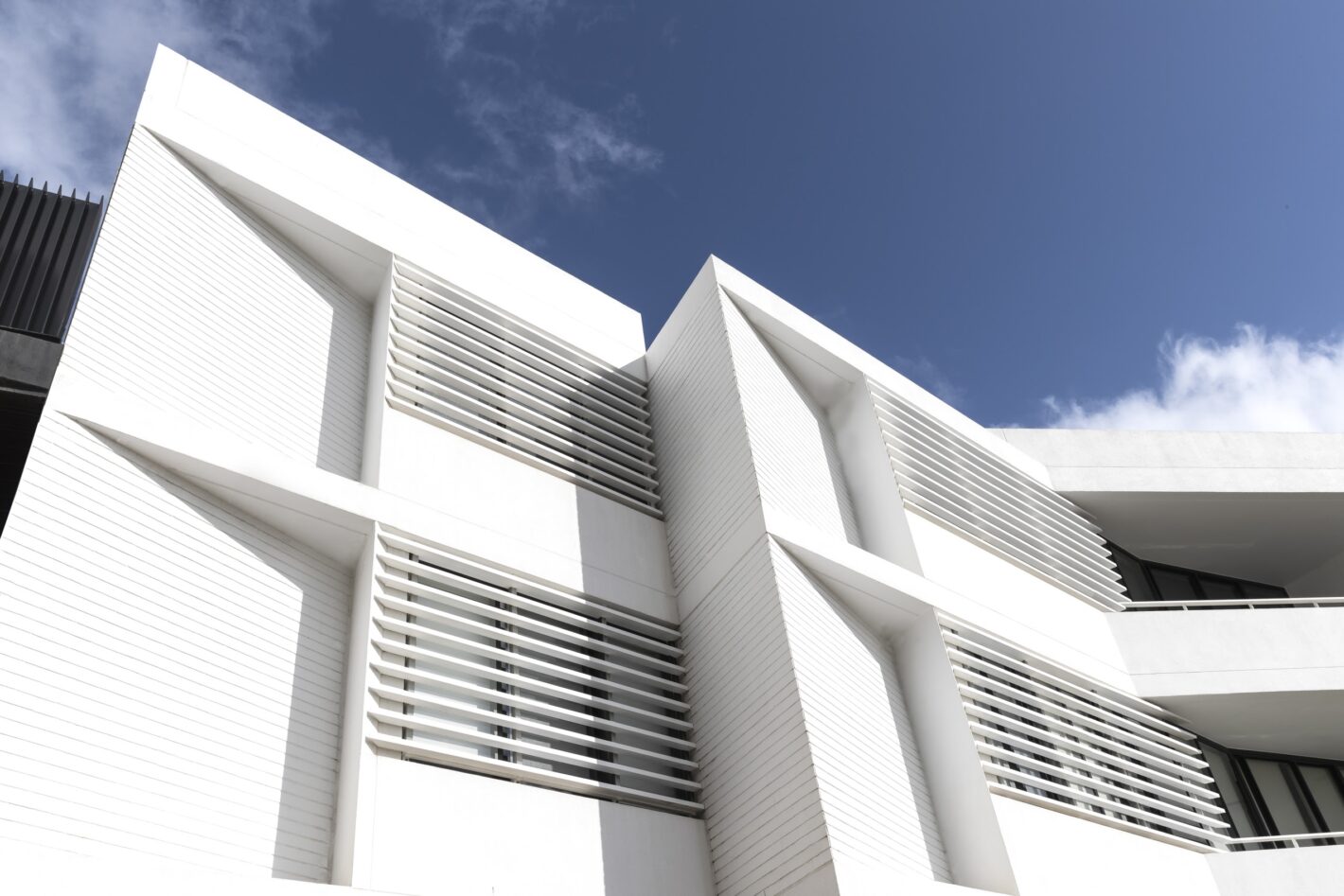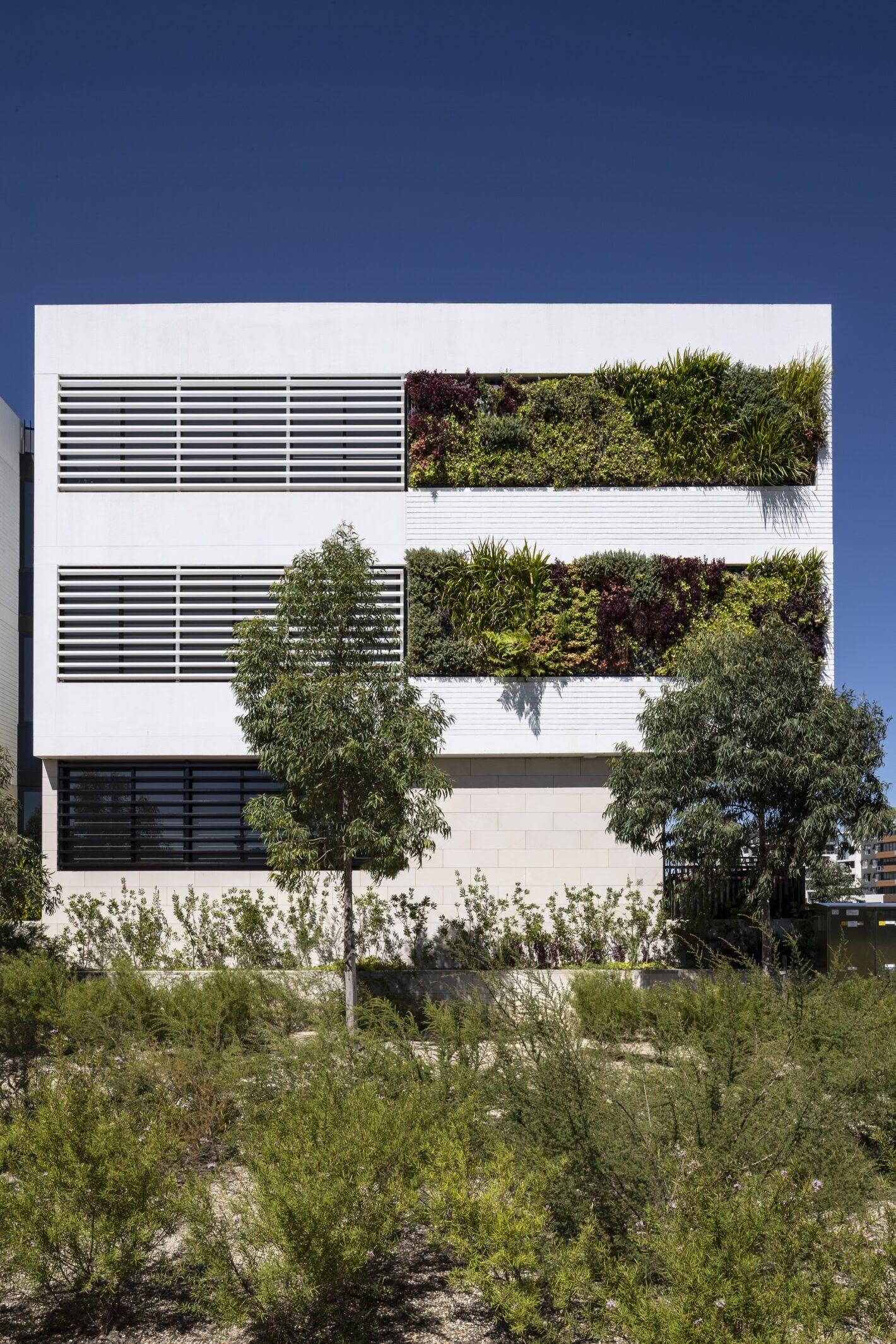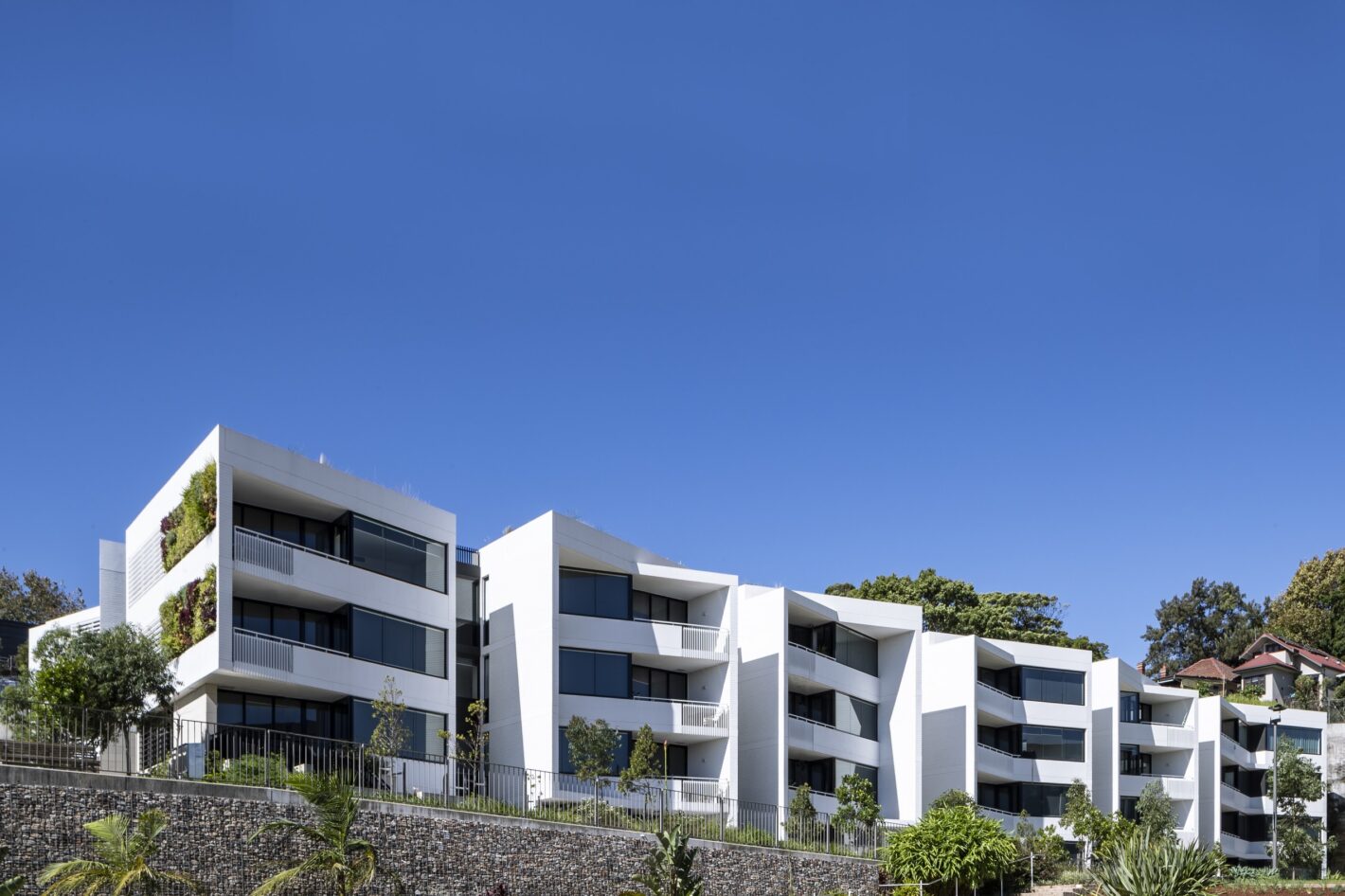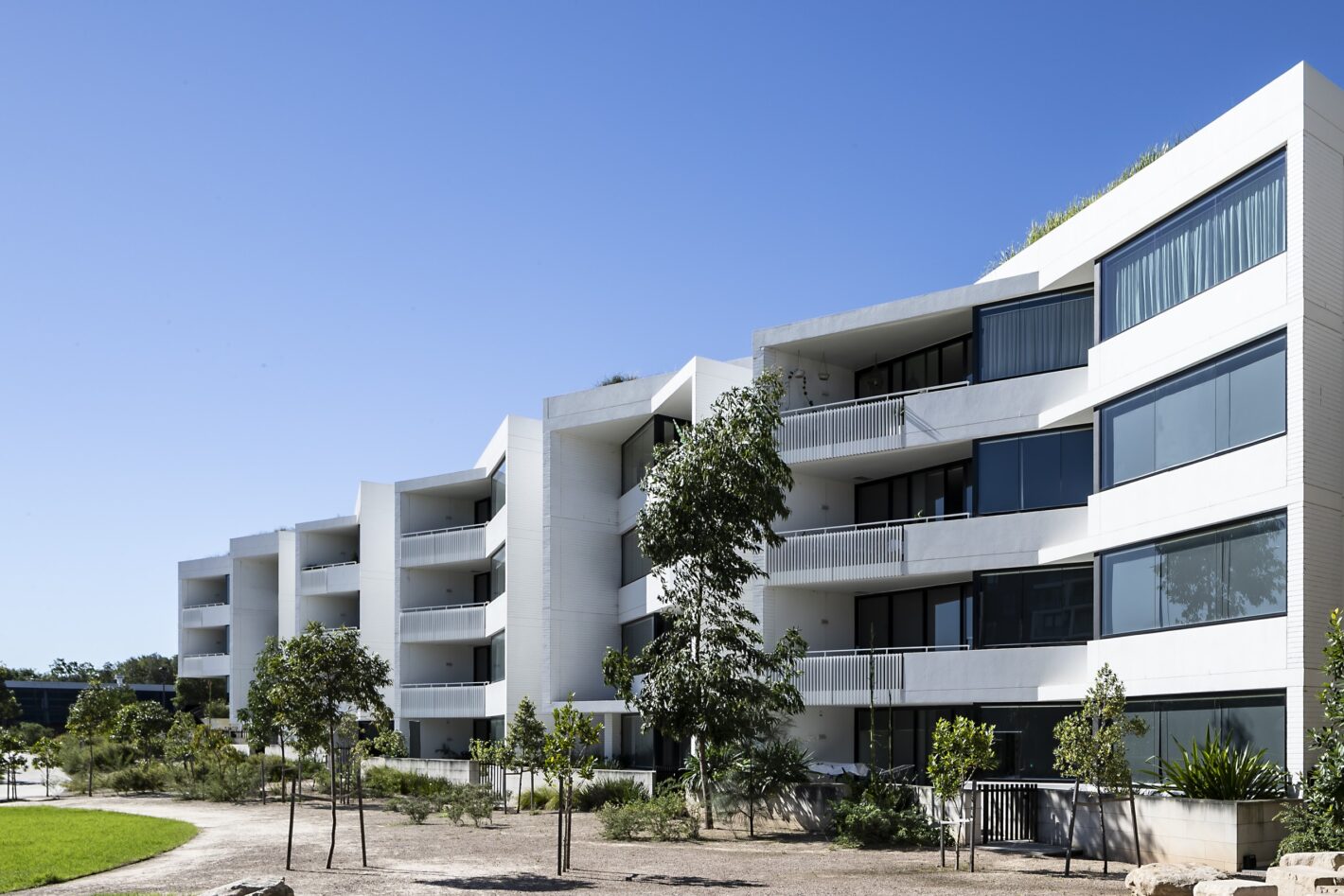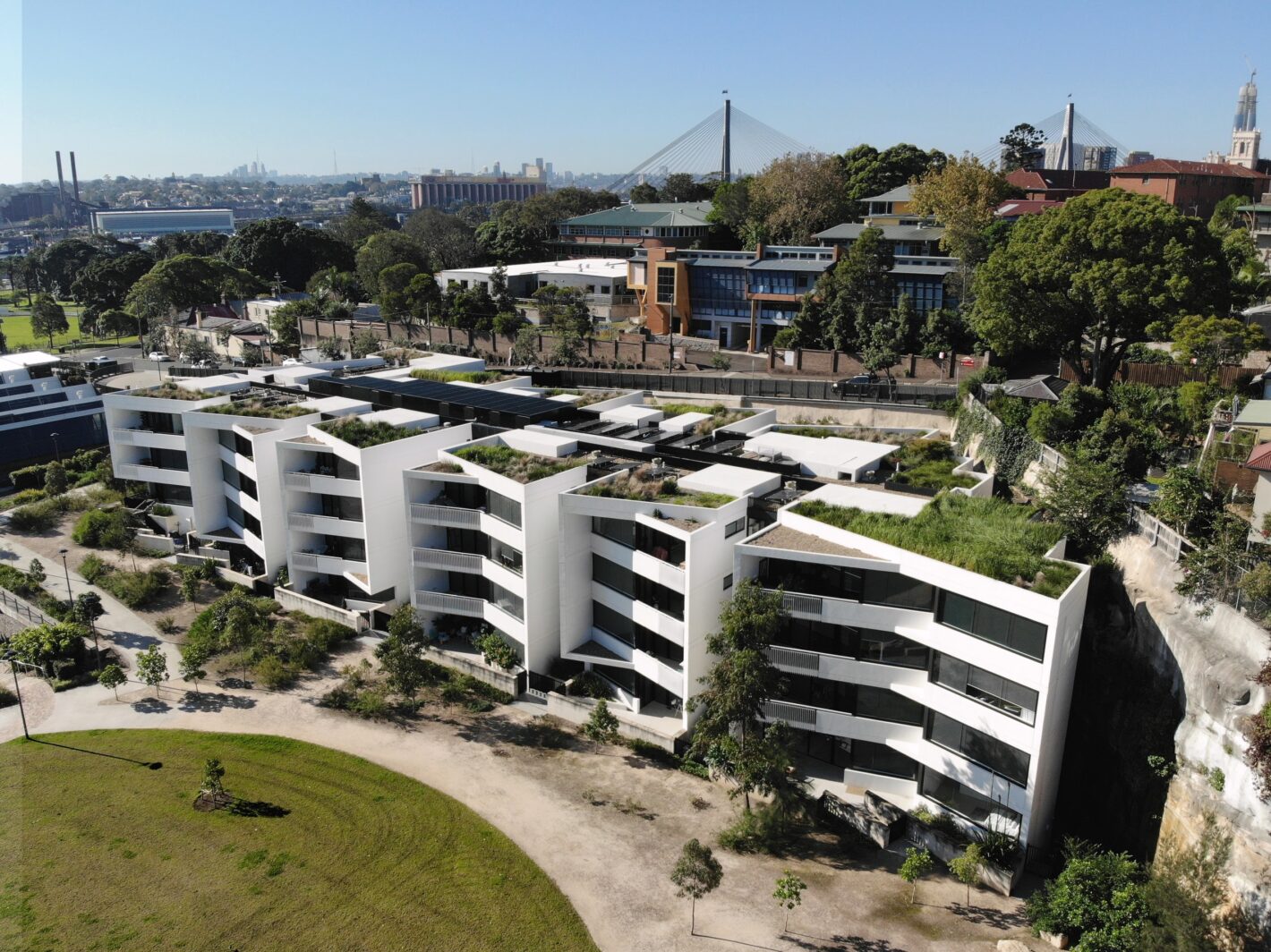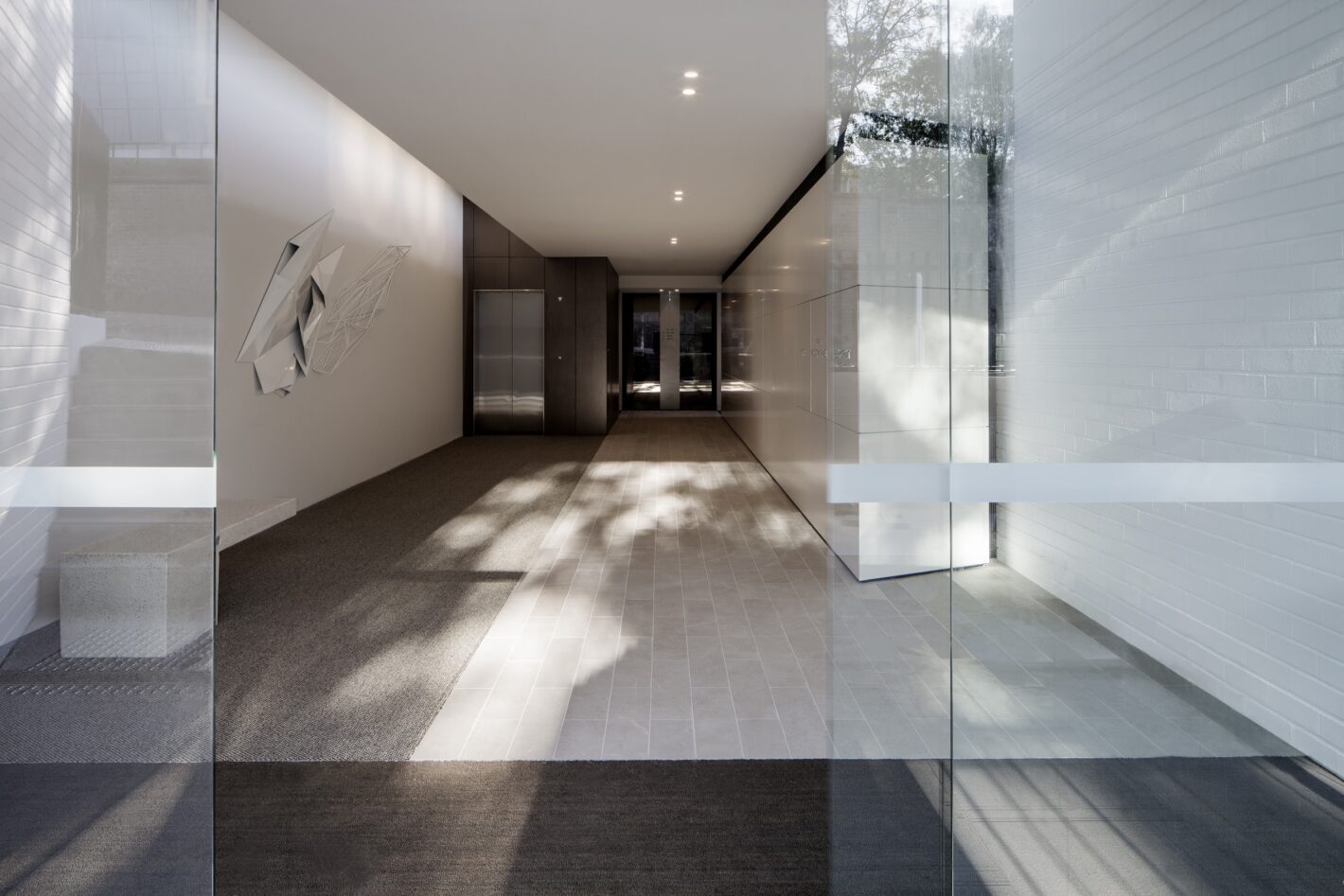At the junction between Harold Park and a spectacular sandstone cliff is Maxwell Place. Designed in conjunction with Mirvac Design, the development of 49 apartments sits at a scale somewhere between an apartment building and a row of terrace houses, thanks to a combination of traditional materials and the form reading as six individual four-storey buildings.
Expand ContentConceived as a promontory, the building’s angled façade of steep vertical walls and layered horizontal slabs draws inspiration from the exposed sedimentary sandstone typical of Sydney’s geology. Extending this concept, slots within the façade become cool canyons of natural ventilation.
This architecture also frames views, controls solar gain and manages privacy. It unites the two sides of the building: one looking over the park, and the other that looks back at the cliff.
Designed to be animated by light and shade, the building is predominantly crisp and white. Weighty materials such as face brickwork, exposed concrete bands and sandstone cladding are offset by the custom-designed metal balustrades. These, together with the sheer-faced picture windows, emphasise the dynamic forms of the exterior and reinforce the building’s geological concept.
Mullion-free and broad, the windows draw views of the park or cliff into the apartments while solid sills manage privacy from this public place. North-facing clerestory windows take advantage of the top floor apartment’s lofty ceiling to deliver a flood of winter sun throughout these grand rooms.
Landscaping is a key element to the design, with the topmost slab of the building sitting virtually flush with the adjacent Maxwell Road to become a fifth façade. It is carefully patterned with sedum planting, pebble ballast and solar panels to make a perfect integration of this space. Likewise, the private courtyards at the base of the building either directly connect to the new public green space on the park side or front the vegetated sandstone cliff, which now serves as a spectacular courtyard wall to the apartments facing Glebe.
The dramatic rockface was influential in the design and was the basis for the interior’s palette. Internal forms reference the bulk of the cliff, with monolithic and strong shapes to kitchen joinery overlaid in a horizontal veneer. This conceptual approach extends throughout, influencing the selection of all finishes, fixtures and details.
2019 Winner NSW Australian Institute of Architect’s Lloyd Rees Award for Urban Design
2019 Winner City of Sydney Lord Mayor’s Prize Urban Design
